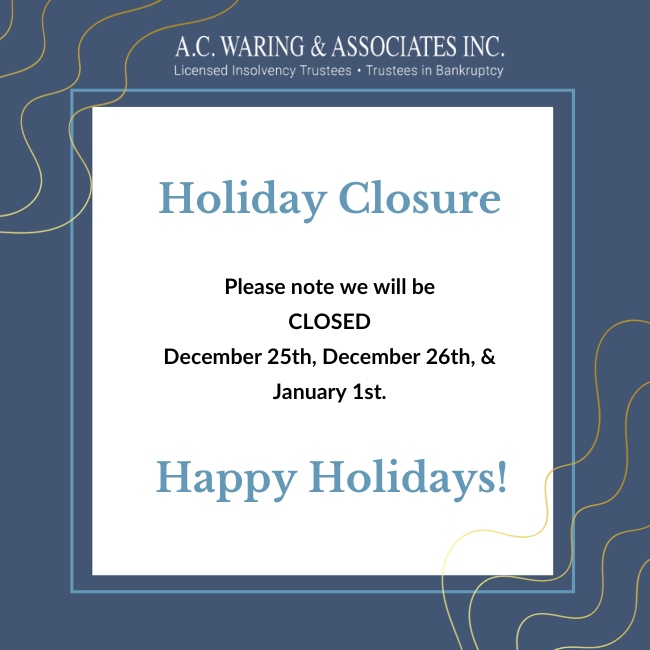
When Canadians went on lockdown back in March, many people were left wondering what would happen to their finances when they couldn’t go to work. The government responded with the Canada Emergency Response Benefit (CERB), a financial aid program that supported Canadians who lost work due to COVID-19 by supplying them with up to $2,000 every 4 weeks for up to 28 weeks, or until October 3rd, 2020, whichever came first.
However, what isn’t clear for many Canadians is how the CERB, and its extension, the CRB, will affect their finances in the long run. Every person must understand that CERB is not “free money” and that this support comes from taxpayers. But how much money you’ll be paying in taxes will differ from person to person.
So, what does the CERB mean for your future finances? Let’s take a look.
Let’s Breakdown CERB
First, we must understand what the CERB was. The CERB was not the only program that helped Canadians handle their financial commitments during the pandemic. Programs were also developed to help those who couldn’t work because they were sick (Canada Recovery Sickness Benefit) and for those who needed to care for children even though their income was eliminated or slashed in half (Canada Recovery Caregiving Benefit).
CERB was the most common of all the plans since it directly helped workers find the income they needed to pay their bills and support their families. Every 4 weeks, the government sent a cheque of $2,000 for up to 28 weeks. When this benefit ended on October 3rd, 2020, the CRA then created the CRB to help those still struggling to make ends meet due to COVID-19.
But where is this money coming from? The answer is taxes.
Breaking Down the Finances
Now, it’s time to do some math.
The amount of money you may owe back in taxes due to these benefits can vary quite a bit depending on the amount of income you bring in, including these benefits, throughout the year. For starters, you will not owe any taxes on your benefits or otherwise if you’ve earned less than $13,229 in 2020 (this is what’s known as a “basic personal amount”).
However, if you make more money than the basic personal amount, you will be taxed 15%, the standard federal income tax rate for 2020. Because the CERB is a taxable benefit, it will be taxed like any other income you make this year. For example, if you have taken $2,000 in CERB payments, you will owe $300 in taxes on those payments. This rule applies nationally to anyone who makes up to $48,000 or less in revenue for 2020, including CERB benefits. This may seem basic enough, but this gets even more complicated when your province or territory then adds their taxes to the amount you’re earning.
Alberta has an income tax rate of 10% for anyone earning less than $131,220 in 2020, meaning that if you took the same $2,000 you made from a CERB payment and applied both the federal tax rate of 15% and the provincial tax rate of 10%, you will owe $500 in taxes on that one CERB payment.
Things get even more complicated if you’re still collecting benefits provided by the CRB after being on the CERB.
What Does CRB Mean For My Finances?
The CRB is simply an extension of the CERB, but it comes with its own unique caveats that you will need to understand when tax season comes.
Instead of $2,000 sent every 4 weeks, the CRB sends $1000 every 2 weeks for up to 26 weeks. However, the CRA will hold 10% worth of taxes for every $1000 given, meaning your cheques will be $900. But this withheld amount does not cover the full taxes you may owe from your CRB income, as this also has to be calculated with your federal and provincial/territorial income tax rates.
Sound confusing? We don’t blame you. But it is easy to calculate exactly how much you owe in taxes once you know the right process. So, for the sake of simplicity, let’s only calculate the taxes owed on the benefit amounts you’ve received. Let’s assume you’ve collected $4,500 worth of payments after the withheld amount is taken out, meaning that, in total, you’ve “collected” $5,000 from the CRB (which we will call the gross sum).
When it’s time for tax season, you will need to tax the gross sum according to the federal and provincial/territorial income tax rates. In Alberta, for most people, It will look something like this:
$5,000 x 15% (federal income tax) x 10% (Alberta income tax) = $1,250 in taxes
Once you have the gross tax, you can start applying the $100 withheld per $1000 delivered. In this case, it’s $500, meaning the total amount of taxes you would own on $5,000 worth of CRB payments would be $750.It’s worth noting as well that the CRA has an income cap of $38,000 a year for those collecting CRB, meaning that you will have to pay $0.50 for every CRB dollar you collect if your annual income is over $38,000 before taxes. This $38,000 cap excludes any CRB payments you receive, but it does include any benefits you may have received from CERB, CRSB, or CRCB. This helps ensure that those who need the benefit the most are the ones who are receiving it.
COVID-19 & My Debt

Can My CERB or CRB Payments be Garnished?
Many Canadians were already struggling with their debt even before the COVID-19 crisis. In many cases, wages were being garnished to help pay back lenders; but what happens when you lose your job and are forced to turn to government benefits to make ends meet?
The good news is that the CERB cannot be garnished by lenders other than the bank and the CRA. If you owe your bank money, any dollar amount you deposit into your account is considered cash and your bank or the CRA may have the right to garnish a certain amount to repay debts.
What If I’m Unable to Pay Back Debts due to COVID-19?
If you’re unable to pay back debt in normal circumstances, you may need to file for a consumer proposal or for bankruptcy. However, the government has allowed for a little more room to maneuver when it comes to handling debts during the current crisis.
If you’re unable to pay back your debts because you have lost your job or a significant amount of income due to COVID-19, you may not need to file a bankruptcy claim just yet. The reason is that the CERB and CRB are designed to help support Canadians financially and not their lenders. If you have no wages or assets to garnish outside of CERB and CRB benefits, you’re considered to be “creditor proof” until you start making an income that can be garnished.
However, this rule does not apply if you owe debts to your bank or the CRA. These groups still can legally garnish your income even if the CERB or CRB supplies it.
Choose A.C. Waring & Associates For Help
If you’ve found yourself in a situation where you need to rely on CERB or CRB, you may already need help with your finances. As Licensed Insolvency Trustees, we can help you find the solutions you need to regain control of your finances and live life with more security.
Please, contact us today.




